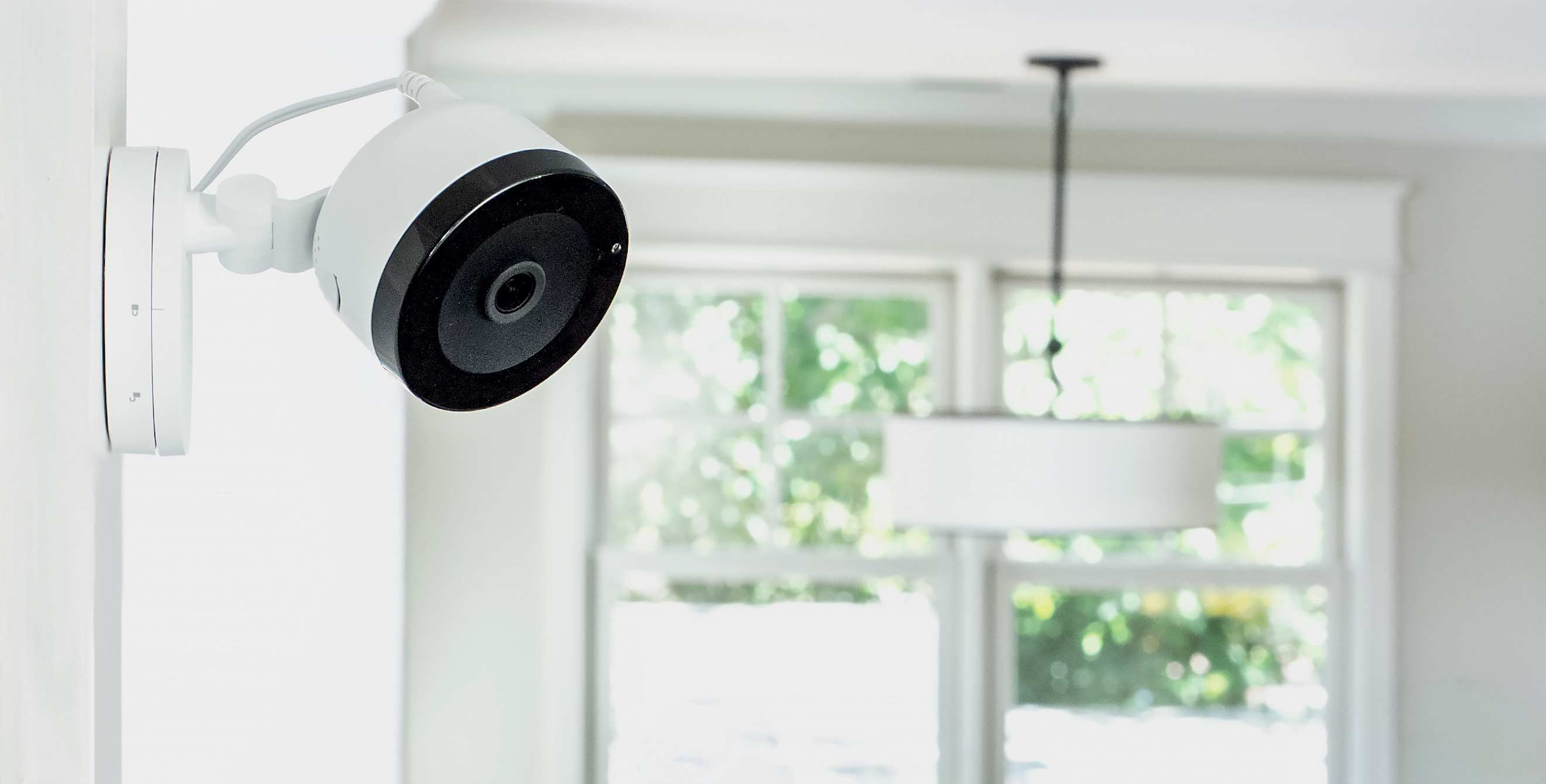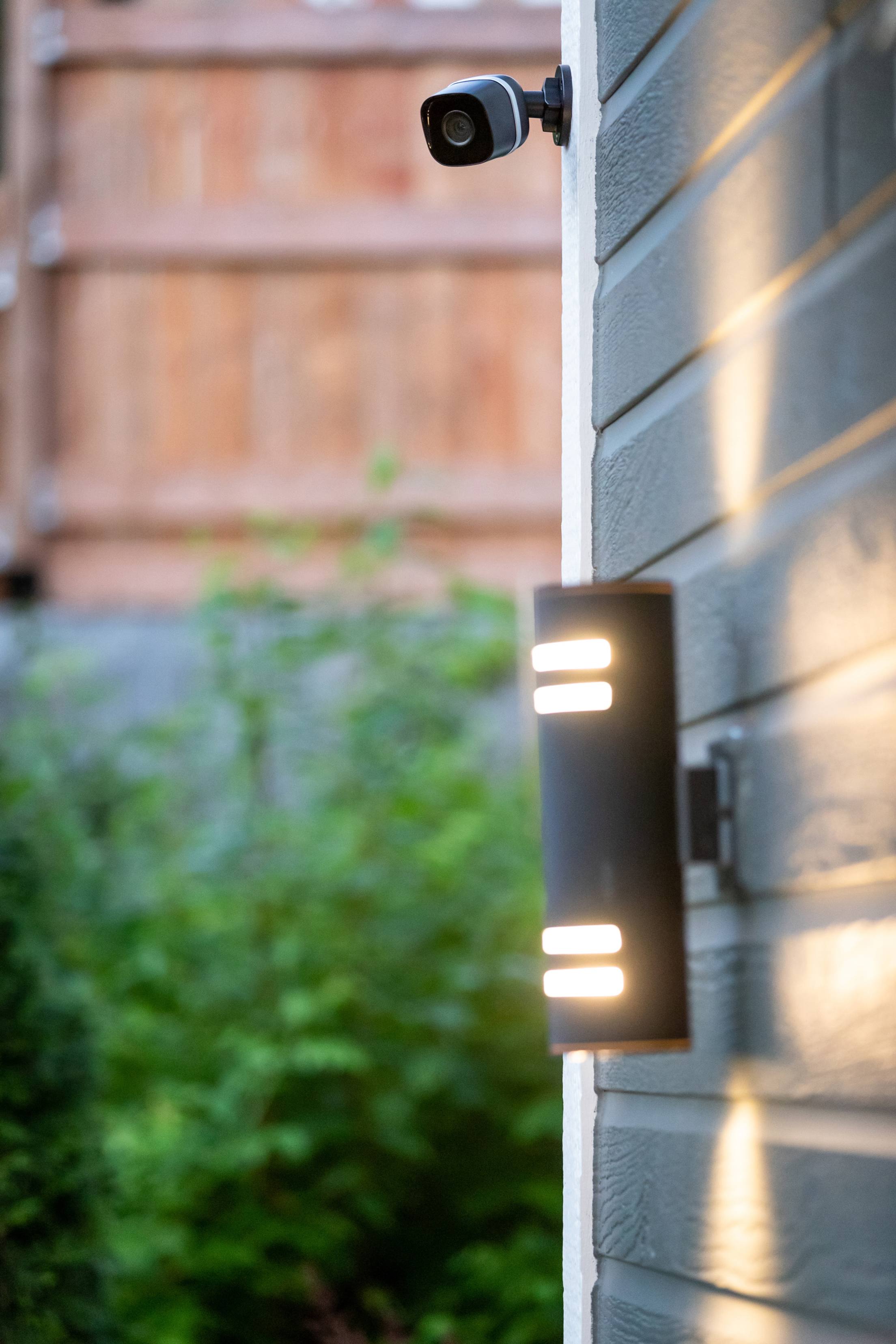
How to Choose the Best Home Security Camera for You
Six questions to help you decide which option is best for your household.

With dozens of brands competing for your attention, it can be hard to know where to start when choosing a security camera for your home. Settling on a camera (or multiple cameras) can be a big decision, so we spoke to Lindsay Gutierrez, Director of Product Management and Residential Operations for AAA Smart Home Security, to help shoppers figure out where to start.
Simply answer these six questions and you should be well on your way to deciding which security camera is right for you.
1. Are you installing the camera indoors or outdoors?
The most foundational question about your new security camera is where you will place it: inside or outside. Outdoor cameras are designed to be weatherproof: resistant to wind, rain, heat, dirt, and more. “When you have 31 straight days where it’s over 110 degrees, like here in Phoenix, you want to make sure the cameras aren’t melting,” says Gutierrez.
All outdoor cameras should be classified with an IP (Ingress Protection) rating. The first digit of the rating measures protection against dust and dirt, the second protection against liquid and moisture. A rating of IP65 or better is sufficient for most household environments.
Outdoor cameras can also be used inside, but you’ll save money on indoor cameras that aren’t rugged enough for outdoor use. And while outdoor cameras must often be mounted to a wall, indoor cameras are commonly freestanding units that can sit on a table or shelf.
2. How are you going to power the camera?
Like all electronics, cameras need electricity to operate. Historically, most are wired, which means you’ll need to locate them near a power outlet or deal with a lengthy extension cord. For outdoor cameras, this can get tricky, as few homes have outdoor electrical outlets near the eaves of the roof. Users often must run a cable to an outlet inside the house—which requires drilling through the wall—or have an electrician add an outlet nearby.
Both those options can be pricey, which makes battery-powered cameras more enticing. These are energized by large, rechargeable batteries that must be periodically removed and topped up. This eliminates a cord, but if your camera is mounted out of reach—or if you’re just forgetful—it can present additional challenges. For those who cannot climb a ladder, or who do not live in housing where it is safe to climb a ladder, Gutierrez recommends a plug-it-in-and-forget-it camera as the simpler choice.

3. How well do you need to see in the dark?
Most security cameras today include some form of night vision, the most common being infrared lighting that illuminates a scene and provides an image when recording after dark. The quality and range of these systems varies dramatically, however, so you’ll want to check out some sample video before you commit to a camera. (YouTube is great for finding clips.)
Lately, cameras are being designed with built-in motion-activated spotlights that can illuminate a scene—doing double duty as an intruder deterrent—and record in color instead of black and white. “That bit of extra light can also give you a little bit more detail when something is close to the camera,” says Gutierrez.
4. Will it work with the rest of your security system?
If you already have a smart home system, there’s a good chance the brand sells a companion camera that is designed to work with it, which means you only need one app to manage your alarm, unlock doors, control thermostats or lights, and manage video. The app can also tie these components together: For example, if motion is detected, you can turn on the lights and trigger all cameras to start recording. Cameras sold by AAA Smart Home Security can do this, conveniently working within the AAA Smart Home Security app.
You don’t have to integrate cameras with your existing security system, but you’ll need to master separate apps if you don’t—and you may lose out on some useful security integration features.
5. Where are videos stored, and are they secure?
Security cameras store video in one of two places: on a physical storage card that’s inside the camera or another device in the house; or on the cloud. Both strategies have advantages and disadvantages.
Onboard storage is as safe as the camera is, but if someone absconds with the camera or the card, you can lose your footage. On the other hand, says Gutierrez, “if you lose your Wi-Fi connection, the camera can still record and save videos.” Onboard storage is an excellent option, even if you don’t think you need it.
Cloud-based storage means video is uploaded to the internet as it is recorded, which makes it less prone to loss due to damage or theft of a camera. But cloud storage service usually requires paying an extra subscription fee, which can cost a minimum of $100 per year or more. While cloud video storage is commonly encrypted, concerns about the safety of cloud-stored video have also been raised, following a number of reports of hackers breaking into these services.
6. What other features are you getting?
It’s in the fine print that security cameras really prove themselves, says Gutierrez. “Resolution, color representation, the quality of the hardware—this is really what we talk about with our Members.” Resolution of at least 1080p (1920 x 1080 pixels) is essential if you want to be able to see any level of detail in your recordings.
Gutierrez also says that motion-detection features are critical considerations. Look for motion detection that offers a long operating range (catching an intruder before they’re standing right in front of the camera) and the ability to set detection zones and virtual tripwires, which mean you can tell the camera to ignore motion in part of the image, such as in a busy street or a neighbor’s yard.
Flexible alerts are another key feature. Do you want to receive a push notification, text message, or email when a clip is recorded, or all three? With AAA Smart Home cameras, Gutierrez says , “you can even choose the size of an object to record or ignore,” which means you can choose to capture videos of your pets running around—or limit clips to capturing human-size interlopers.
AAA Smart Home Security can supply the best cameras for your space, plus AAA Members save up to $60 per year on monitoring.